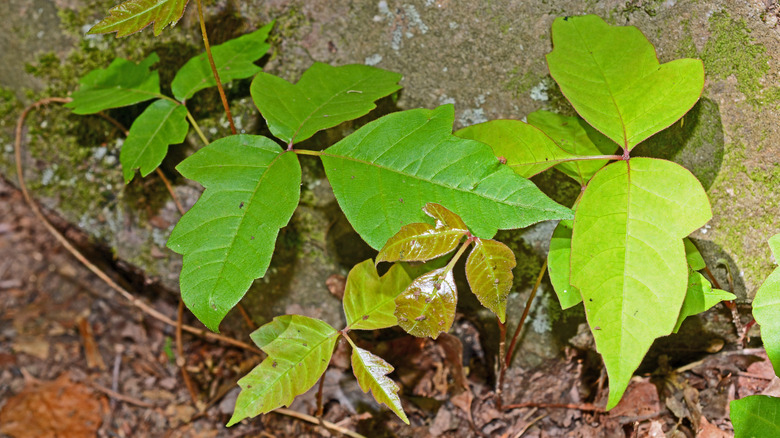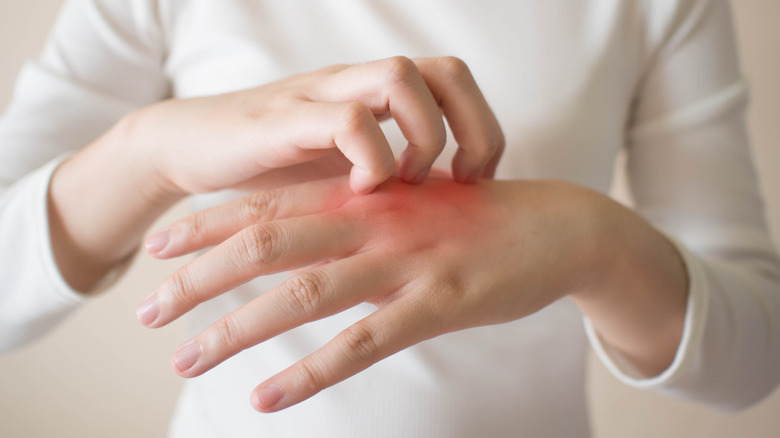Poison Oak Vs Poison Ivy: What's The Difference?
Poison oak and poison ivy are two types of plants that most people fear because one brief encounter with either can leave skin covered in an itchy rash and painful blisters (via Healthline). An oil called urushiol found on both plants is responsible for the rash, and no part of the plants are safe to touch, including the bark, roots, and berries. Poison oak and poison ivy grow throughout the United States all year round, and they are toxic all year round as well. So how can you tell the difference between these poisonous plants?
Poison ivy can either be a shrub or vine. As a vine, it grows along the ground, clinging to shrubs and other structures. The leaves on the stems appear in groups of three. They are glossy, and the edges can be smooth or slightly jagged. They also have some seasonal features to keep in mind. Tiny, off-white buds will appear around the leaves in the spring. During the fall, the leaves may take on a yellow, orange, or red color. In the winter, the leaves become more red and shriveled.
Poison oak also has groups of three leaves on its vines. However, it can have up to seven leaves in a cluster. The leaves can sometimes be fuzzy, and they have more rounded edges, resembling oak leaves. They turn reddish in the fall, and per the Centers for Disease Control and Prevention can have small berries on the stems.
Treatment for poison ivy and poison oak rashes
If you are unlucky enough to develop a rash from either of these plants, the first thing you should do is attempt to remove all of the oil from your skin with soap and water. Also be sure to wash all exposed clothes and shoes to prevent spreading the oil anywhere else (via Medical News Today). As hard as it can be, you must try not to scratch the bumps. Using an over-the-counter anti-itch cream such as calamine lotion can ease symptoms. Sometimes, oral antihistamines can also help with itching. Usually, most rashes improve within two weeks (via Healthline).
If your symptoms don't improve in three to four weeks, or if you have difficulty breathing, contact your doctor. If your face, eyes, lips, or tongue swell, or if you notice the rash is spreading to other parts of your body, you should also seek medical attention (via Medicine Net).


